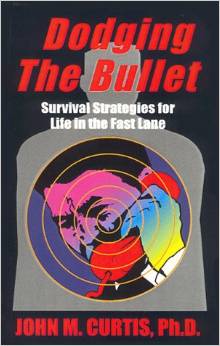LOS AGNELES.–Stuck at the International Space Station [ISS] for the last 63 days,, 49 days longer that planned, Astronauts Butch Willmore and Sunni Williams have no way back to earth yet with the Boeing Starliner spacecraft with propulsion issues and helium leaks scuttling the return flight. NASA has not yet contracted with SpaceX to pick up the two stranded astronauts with the more reliable Falcon 9 rocket and Dragon spacecraft. NASA engineers confirmed excessive heat around Starliner’s thrusters, causing Teflon seals to bulge, causing obvious mechanical problems not easily fixable anytime soon. NASA considers keeping Willmore and and Williams on the Space Station for another six months until the next return flight from SpaceX’s Dragon capsule. NASA can’t currently determine the safety of the Boeing Starliner capsule, currently docked from any spaceflight. NASA must start a “flight readiness review” for the Starliner before it can fly again.
Boeing Starliner faced years of delays after SpaceX Dragon took off with astronauts Robert Hurley and Doug Behnken May 20, 2020, over four years before Boeing’s Starliner launched June 5. Now with mechanical problems, it shows the inferiority of Boeing’s engineering at commercial space program, despite getting $4.2 billion to SpaceX $2.6 billion back in 2006. So, what happened with Boeing’s engineering, leaving the Starliner with a mechanical breakdown remains unknown? What’s known for sure is that the Starliner crew capsule is not safe enough to return Willmore and Williams back to earth. Propulsion issues and helium leaks are serious matters, especially when it comes to the extreme conditions of reentry from space. NASA’s Commercial Crew Program Manager Steve Stich said that ground testing in New Mexico has not led to any fixes. Forcing Willmore and Williams to keep orbiting on the ISS does not answer the problem.
What credit has billionaire entrepreneur Elon Mush been given for crating his reliable Dragon II capsule that replaced the retiring Space Shuttle in 2011? Musk, with his limited NASA budget, delivered for the American public, creating a reliable replacement for the obsolete Space Shuttle. Boeing spent billions on developing the Starliner, rather that collaborating with Musk to consolidate operations for the purpose of producing the most reliable replacement to the Space Shuttle. But no, Boeing, whose space division had been preceded SpaceX start date March 14, 2002 went it alone. NASA would have been better off to discontinue funding Starliner and ask Boeing to join operations with SpaceX. Musk has gone it alone with SpaceX because NASA envisioned that space was a competitive enterprise, to produce the best possible spacecrafts and rocket systems to replace the Space Shuttle. NASA has not decided what to do with Starliner currently docked at the ISS.
Musk proved that assembling the right talent and team was more important than any reputation of NASA or Boeing but starting fresh paid rich dividends. “I would say that our chance of an unscrewed Starliner return have increased a little based on where things have gone over the last week or two,” said Ken Bowersox, associate administrator for NASA’s Space Operations Mission Directorate, referring to NASA’s internal review process before any date set for Starliner’s return. Boeing disputes the idea that even with all the issues with helium leaks and bulging Teflon seals, the Starliner is unsafe to return Willmore and Williams. “But again, new data coming in, new analysis, different discussion—we could find ourselves shift another way,” said Bowersox, still concerned about Starliner’s safety for manned space operations. Most NASA space engineers agree that there’s no room for error, certainly not conjecture over safety in human spaceflight.
Boeing Space Operations has had problems for years with numerous delays over its Starliner spacecraft, literally taking off four years after Musk’s Dragon space capsule. NASA must figure out what to do with Boeing knowing they’ve given the space division plenty of time to work out all the bugs. But it only makes sense for NASA that it should not throw more cash at Boeing but instead encourage Boeing to consolidate operations under SpaceX. NASA isn’t inclined to let the Starliner return to earth, putting the onus on SpaceX to send another Dragon Spacecraft to the ISS to fly Willmore and Willimas back to earth. NASA announced that it is delaying SpaceX Crew-9 slated to return four previous astronauts back from SpaceX Crew-8. NASA pushed back SpaceX Crew-9 from Aug. 18 to Sept. 24. NASA has real safety concerns about allowing Starliner in its current condition to fly back to earth without fixing all of its mechanical problems.
NASA got is competitive process wrong pitting SpaceX against Boeing Space Systems when the first awarded over $6 billion in funds to build the more reliable replacement for the obsolete Space Shuttle. Space Shuttle is now a historic relic at museums around the country, a real dinosaur when it comes to today’s more nimble, maneuverable and practical spacecraft. Whatever happens to Musk’s Mars Starship and super heavy rocket is anyone’s guess. What know for sure is that SpaceX’s Dragon II capsule is the only usable vehicle to shuttle astronauts to-and-from the ISS. NASA must reconsider having SpaceX and Boeing work at cross purpose and insist the two companies combine resources to refine the Dragon II spacecraft’s mission to continued manned space operations. Whether NASA Artemis II first moon mission is on schedule to fly Sept. 2025 around the moon isn’t known. What’s known now is that only SpaceX can get astronauts to-and-from the ISS.
About the Author
John M. Curtis writes politically neutral commentary analyzing spin in national and global news. He’s editor of OnlineColumnist.com and author of Dodging The Bullet and Operation Charisma.



